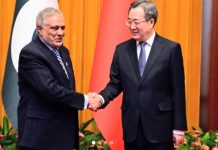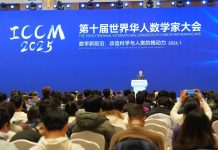BEIJING: Guangxi Zhuang: The dinner table in He Mingxing’s house is usually a folkloric mosaic of traditional foods such as glutinous rice cakes from the Zhuang ethnic group and dishes from the Mulam. His family is made up of members from different ethnic backgrounds—his mother is Zhuang, his father is Han, and his daughter-in-law is Mulam.
Such a family composition is typical in his home village of Jinji in Luocheng Mulam Autonomous County, Guangxi Zhuang Autonomous Region. The village, with some 300 residents in more than 70 households, is inhabited by seven ethnic groups who speak 11 dialects. About 30 percent of the villagers are Han, the largest ethnic group in China with a little more than 91 percent of the country’s population.
Ancestors in the village created a festival that falls on the 15th day of the 11th month on the Chinese calendar called Ping’an, which means “safe and sound” in Chinese. On this day, as important as the Spring Festival, villagers put on their traditional clothes and gather to cook assorted ethnic foods. “People of diverse ethnic groups gather here, and we are like a family,” He told Xinhua News Agency.
China is a country with 56 ethnic groups. Aside from the Han, the remaining 55, though with smaller populations, are scattered across the nation’s vast area. They mainly live along the border areas in northeast, north, northwest and southwest China. They each have their own unique attires, festivals and customs.
The proportion of ethnic minority groups in China’s mainland population rose 0.4 percentage point in the decade after 2010, and their total population increased 10.26 percent to 125.47 million during the same period, according to the seventh national census results released in May.
“We will encourage more exchanges and interactions among different ethnic groups, helping them remain closely united like the seeds of a pomegranate that stick together, and work jointly for common prosperity and development,” President Xi Jinping, also General Secretary of the Communist Party of China (CPC) Central Committee, said while delivering a report to the 19th National Congress of the CPC in 2017. At the Central Conference on Ethnic Affairs held in August, Xi underlined the importance of consolidating a sense of community for the Chinese nation and unwaveringly taking the correct approaches with Chinese characteristics in the management of ethnic affairs.
“Increasing common ground and respecting the different characteristics of all ethnic groups are two sides of the same coin. By promoting both, we can achieve development and prosperity together,” Hu Yan, a professor specializing in studies on ethnic groups and religions with the Party School of the CPC Central Committee, told Beijing Review.
Jinji exemplifies a place where extensive exchanges, communication and integration of various ethnic communities are encouraged and upheld. Around 27 years ago, Xiao Suluan married her Han husband and moved to live with him in Jinji from nearby Rongshui Miao Autonomous County. When she first came to the village, Xiao stayed indoors and refused to go out because of the language barrier. “I couldn’t understand many villagers as they would speak in dialects different from the Miao dialect I speak in my hometown,” Xiao said.
– The Daily Mail-Beijing Review News exchange item






